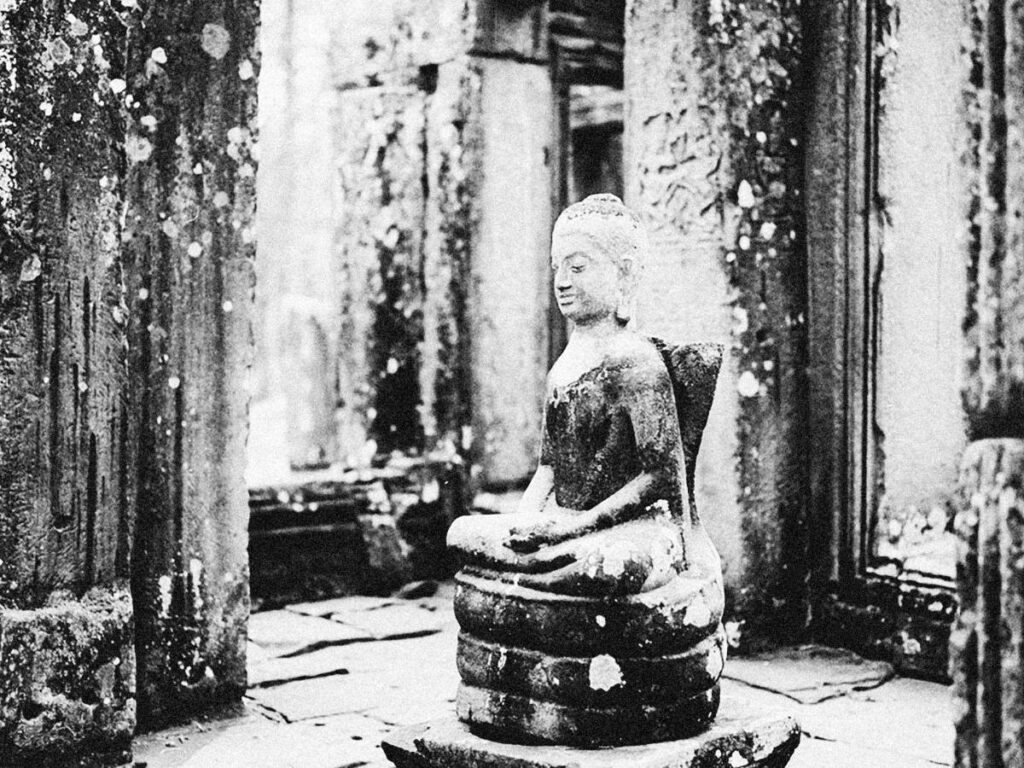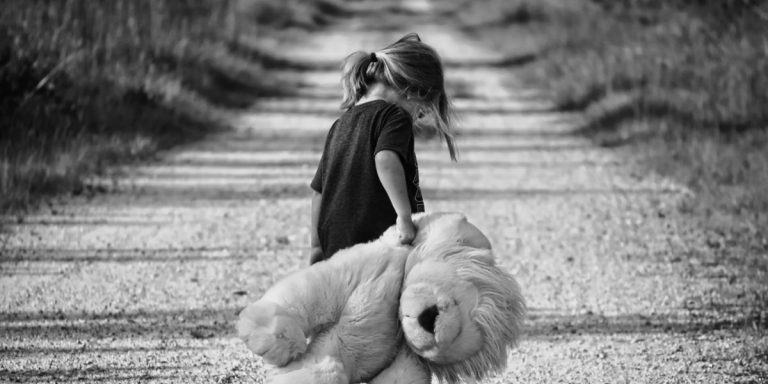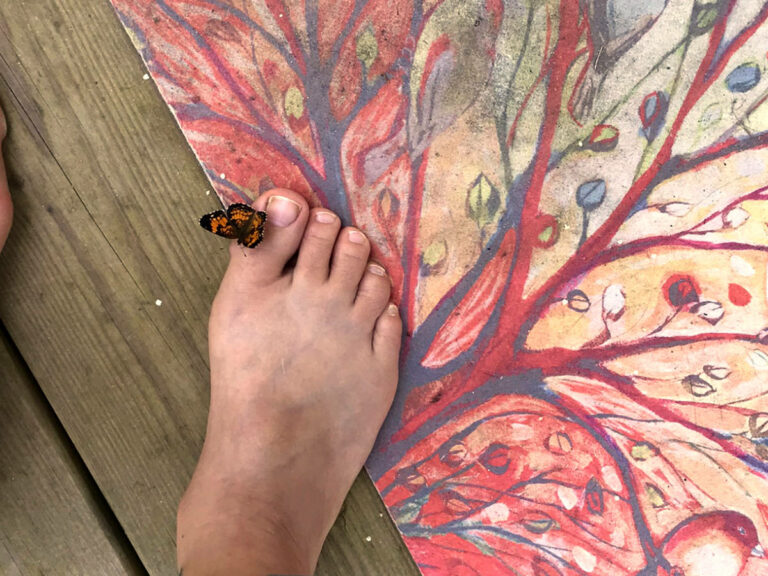Photo by Katy Morikawa
Listen
Or Listen wherever You Get Your Podcasts
One of my favorite resources for managing anxiety, depression, frustration, or boredom is to tap the reservoir of joy that seems to dwell beneath the shallower currents of my daily cares. This is a wonderful resource that I want to share here, a resource for wild and uncertain times like these, as well as for times of peace. In this post I will share some background principles and then steps for accessing your own reservoir of joy.
Finding this deeper reservoir requires first and foremost unhooking your joy from your circumstances. In other words, you have to stop looking for people, places, experiences, and situations to make you happy, and instead dig deeper. Most people don’t figure this out until they are quite elderly, if ever. A younger person needs luck, training, or proper motivation. In my case, motivation came in the form of long boring humbling stretches of life, disappointments in love, health crises, and losses on a variety of fronts…and still it took me until I was fifty. What are your motivations?

What are your motivations for seeking your own reservoir of joy?
I suppose I am grateful for my losses, for there is freedom in discovering the deep and boundless reservoir of joy that resides underneath everything. If you don’t have any strong motivation right now–because you are contented or maybe you’re overjoyed with your life (and if so, yay for you!), I still believe that these insights offer a valuable resource. Maybe someday in the future, they’ll bear fuller fruit for you.
I believe that joy, more than an indicator or reaction, is a fundamental property of consciousness. We see this in the wisdom traditions in interesting places. Shiva, one of the three Hindu gods, each of whom represent the three fundamental principles of the universe–creation, preservation, and destruction–is the god of death and destruction. And yet he also embodies the highest refinements of consciousness. One of his attributes is eternal joy. Shiva destroys the universe and creates the next universe from its ashes. His is the joy that survives all destruction and loss. I believe this teaching reflects a discovery made by many people through time: that joy need not depend on any thing, but endures of its own accord.

There are passages in The Lord of the Rings when Gandalf’s companions see in his eyes both unfathomable determination, wisdom, and worry, but beneath these, a deep joy. Gandalf is immortal and witness to many sorrows and losses during his thousands of years in Middle Earth. After he falls in Moria and dies, is brought back from death and returns as Gandalf the White, his companions recognize an even deeper joy in him that strikes them with its power and mystery.
Beneath the rollercoaster ride of success and failure, love and loss, pleasure and pain, you will find a surer reservoir of sustenance for difficult times, and to share as a gift with all you touch. I suppose this was what the Buddha pointed to when he taught about letting go of attachment, his mouth curled in the faintest of smiles. But fear not! This does not mean depriving yourself. In fact, joy at your happy circumstances when they come–which they will–grows deeper, more sincere, and brilliant as you tap the deeper nature of your being more reliably. You simply won’t chase circumstances to give you that feeling of joy.

So, this is a pragmatic decision, in many ways, because life is full of things we cannot control. Shit happens. No matter how fortunate we are, or how developed our artistry for creating a happy life, the universe is a very big place, and we are all subject to its storms. Tragedy can come as a freak accident or like a story I heard recently about a woman living in Montecito, California. This is one of the wealthiest most sheltered communities in the world, and she had by all apperances a rare and privileged life and a loving family. One night several years ago, a mudslide tore through her house and killed two of her three children in the space of moments. But even if disaster never happens to you, you can’t escape life’s highs and lows–they are part of being alive.
Tips for Working with Joy
Here are some tips for accessing and working with joy. I believe this has the power to transform your life.
Believe & Let Go
The first step is to believe that it’s possible to access the deeper sources of joy in your being, and to recognize that the pursuit of happiness through internal or external conditions can’t ultimately be relied upon. I make a point to include internal conditions here because I think spiritual aspirants in particular can set up expectations around higher states of consciousness for accessing joy–like, “When I’m enlightened, I will experience bliss.” Or, “When I’m fully healed and aligned with my purpose, I will experience joy.” When actually, joy is much more accessible than these!
Get to Know Your Joy
Next, you’ll want to find and familiarize yourself with your joy. Here is an exercise for this. If you already know joy, if it’s easy for you, then you can skip to #4 or #5.
- Choose or decide on a meter or scale which will represent a spectrum of joy. It can be a 5-star scale or a scale from one to ten or something as simple as a gradient from no joy whatsoever to ecstasy. Choose the scale the matches your temperament. Later, you’ll be able to differentiate qualities of joy (as opposed to intensities), but keep it simple for now. Don’t worry if you’ve never experienced the extremes. Your unconscious, as heir to the legacy of all human consciousness, does know.
- Set aside a little time for this exercise. Take a few calming, centering breaths, while allowing your mind to expand and flow. There’s no need for a highly disciplined focus here. In fact, too much focus and control can be counterproductive. Laying back and watching the clouds go by is a good simulation of the state of mind you want for this exercise. Take some time to allow yourself to relax and let go.
- Now cast back over past experiences which you can recall with some clarity. (Although we must ultimately unhook our joy from our experiences, this is an easy way to find it initially.) What level or quality of joy did you experience during those times you can recall? Check in with each one. If an experience ranks high on the joy scale, linger there. Focus particularly on the quality of joy you feel, rather than any of the other details.
- Now imagine yourself feeling the full spectrum of joy, starting at the bottom and working your way up. Pause at each point on the scale and really register the feeling. If you can’t 100% recreate the feeling at any of these points, use your imagination. What would it feel like if I could feel joy at an 8?
- Now imagine the most powerful feeling of joy you can. You can populate your imaginary experience with details, circumstances to really trigger the feeling. Relish the fantasy, go deeply into your joy. Can you bring yourself to tears? Can you find ecstasy? If you can’t find the deepest ecstasies, don’t worry. In time, these will come.
- Make it a daily practice to calm and relax your mind, and then experience joy, the deeper and the fuller the better. Do at least ten minutes a day.
Where Does Joy Reside?
As you become more familiar with your joy, you’ll notice that it tends to reside in a location relative to your body. While it may sometimes move in surges or peaks, it will tend to dwell in a particular place. For me, this is always downward, as though I were standing above a deep and clear lake, feeling a resonant cord connecting the lake with my solar plexus and heart. Find where joy resides for you, as this is where you’ll return to find it when you need it.
Drawing on Your Joy
Drawing on your joy is an interesting dance. The more often you access it, the wider the pathways toward it become and the easier it will be to summon at will. Play with it. Practice tapping into it for no reason at all. Fortunately, this is one exercise that rewards you every time!
Banish Negative Emotions
To banish negative emotions, simply turn instead to that joy within. It’s like turning on a light in a dark room. Sometimes it will work, sometimes it won’t. I find it works best for the nameless fears, the vague anxieties, and the gloomy pessimism that show up, especially in the morning!
Playing with Paradox
Practice simply being aware that your joy is there, even when you aren’t really feeling it right now. See if you can hold it in your awareness while you are in the midst of other emotions–anxiety, depression, frustration. Playing with paradox like this is very good for the mind, body, and heart.
Balancing Joy with Empathy
As you become more practiced at tapping your own joy, you will probably be tempted to use it to deflect difficult emotions or to try to change other peoples’ emotional states, especially when they’re angry, or gloomy, or stressed. And of course, part of the reason I’m sharing this tool is so that you can at times do just this. But you need to be careful here, because you can end up damaging your own empathy by doing too much of this. Sometimes, it is enough to simply be present with difficult emotions, either in yourself or in another person, while remaining aware of the joy underneath it all, like a still shining lake far away but in view. You can draw on it to keep you from getting sucked down into a bad mood or resenting this person who’s having a bad day, but try to avoid using joy as a bludgeon! You’ll alienate people and ultimately hurt yourself.
The Right Tool for the Occasion
So far, I don’t feel that tapping my joy is the right tool for all occasions. Sometimes it feels important to face a harder truth, let myself experience a pain or frustration, or grieve with someone in their loss. But the reservoir of joy is there to renew my optimism when the pain and grief have passed. I believe it lends resilience. I certainly feel much more resilient these days!
Enlightenment?
Does this lead to enlightenment? I really don’t know. And I am by no means an advanced practitioner of joy. I still have plenty of problems and get triggered and fall short of my ideals. But, I have gotten better at this over time. It is a skill or a capacity that can be developed. This is why I’m sharing these tools in hopes you can find a way to use these practices in your life and to access this deeper wellspring of your being.
Inspirations
I owe inspiration for these insights and practices for working with joy to the following:
- Daniélou, Alain. (1991). The myths and gods of India: The classic work on Hindu polytheism. Rochester, Vermont: Inner Traditions.
- J. R. R. Tolkein’s The Lord of the Rings.
- Joe Dispenza’s Becoming Supernatural and Breaking the Habit of Being Yourself.
- “The Body Compass,” a coaching tool shared with me by Larkin Goff. Listen on Spotify or find it wherever you get your podcasts:





